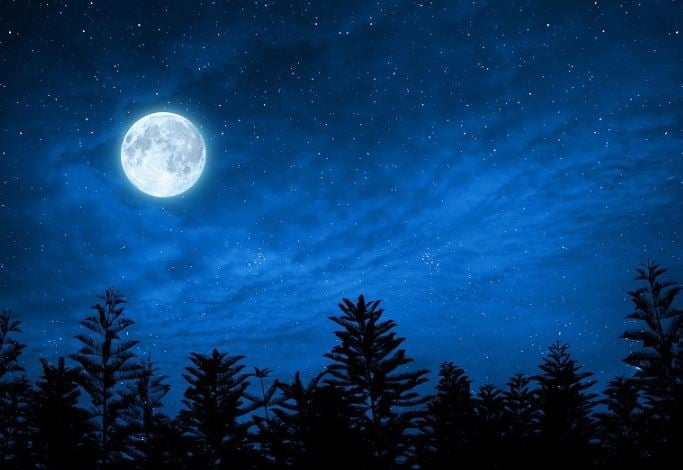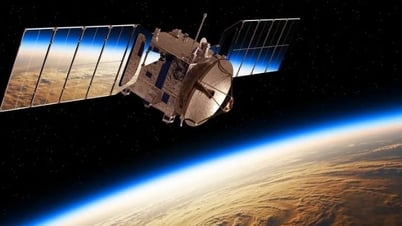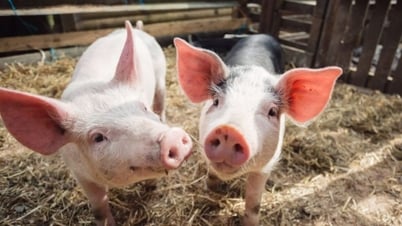The lunar cycle – the main cause of the moon phases
The moon does not produce its own light, the light we see is sunlight reflected on the moon's surface. Meanwhile, the moon revolves around the earth in an elliptical orbit, taking about 29.5 days to complete one revolution, creating the lunar cycle. During each cycle, depending on the relative position between the sun - earth - moon, observers from earth will see different illuminated parts, creating the phenomenon of full moon - crescent moon.
From New Moon to Full Moon – Interesting Moon Phases
The lunar cycle can be divided into several phases:
New moon (1st day of the lunar month): The moon is located almost between the sun and the earth. The illuminated part is turned toward the sun, so people on earth cannot see the moon.
Crescent moon (2nd – 5th): The moon begins to "appear" with a small, bright part like a crescent in the evening.

Illustration photo.
Crescent Moon (7th – 8th): Half of the moon is illuminated. At this time, the moon usually rises around mid-afternoon and is high in the evening.
Full moon (full moon – 15th day): The moon is opposite the sun, the entire bright part appears brightly in the evening, rises at sunset and sets at dawn the next day.
After the full moon (16th to 30th): The moon continues to rotate, the bright part is gradually obscured, the moon gradually wanes and returns to the new moon phase.
Why does the moon rise early and rise late?
Every day, the moon rises about 50 minutes later than the day before. That's why we see the time the moon appears in the sky change from night to night:
Early lunar month: The moon rises during the day or early afternoon, so it is difficult to see the moon at night.
Full moon night: The moon rises around 6pm – right when it is dark, so it is easy to observe and is often considered the “most beautiful” time of the moon.
End of the lunar month: The moon rises later and later, sometimes until midnight or dawn, so even though it is still present in the sky, it is difficult to see.
The Moon and Human Culture
Since ancient times, people have observed the phenomenon of the moon's changing shape to create the lunar calendar - a calendar system based on the lunar cycle, still commonly used in many Asian countries such as Vietnam, China, Korea...
Not only that, the full moon and the waning moon also have many symbolic meanings in Eastern poetry, religion and philosophy. The full moon represents fulfillment and reunion; the waning moon represents sadness and distance. It can be said that the moon is not only the closest celestial body to the earth, but also a sacred symbol deeply attached to the spiritual life of humans.
Conclude
The moon's changing shape and appearance is not a random phenomenon, but the result of natural laws in the solar system. Every moonrise, whether early or late, full or waning, is a testament to the rhythmic operation of the universe.
And for humans, no matter what era, the moon has always been an endless source of inspiration for poetry, art and never-ending dreams.
Source: https://doanhnghiepvn.vn/cong-nghe/trang-tron-trang-khuet-trang-moc-muon-vi-sao-mat-trang-luon-thay-doi/20250423030323005



![[Photo] General Secretary To Lam attends the conference to review 10 years of implementing Directive No. 05 of the Politburo and evaluate the results of implementing Regulation No. 09 of the Central Public Security Party Committee.](https://vphoto.vietnam.vn/thumb/1200x675/vietnam/resource/IMAGE/2025/5/19/2f44458c655a4403acd7929dbbfa5039)
![[Photo] Panorama of the Opening Ceremony of the 43rd Nhan Dan Newspaper National Table Tennis Championship](https://vphoto.vietnam.vn/thumb/1200x675/vietnam/resource/IMAGE/2025/5/19/5e22950340b941309280448198bcf1d9)
![[Photo] Close-up of Tang Long Bridge, Thu Duc City after repairing rutting](https://vphoto.vietnam.vn/thumb/1200x675/vietnam/resource/IMAGE/2025/5/19/086736d9d11f43198f5bd8d78df9bd41)

![[Photo] President Luong Cuong presents the 40-year Party membership badge to Chief of the Office of the President Le Khanh Hai](https://vphoto.vietnam.vn/thumb/1200x675/vietnam/resource/IMAGE/2025/5/19/a22bc55dd7bf4a2ab7e3958d32282c15)




















![[Photo] Prime Minister Pham Minh Chinh inspects the progress of the National Exhibition and Fair Center project](https://vphoto.vietnam.vn/thumb/1200x675/vietnam/resource/IMAGE/2025/5/19/35189ac8807140d897ad2b7d2583fbae)



























































![[VIDEO] - Enhancing the value of Quang Nam OCOP products through trade connections](https://vphoto.vietnam.vn/thumb/402x226/vietnam/resource/IMAGE/2025/5/17/5be5b5fff1f14914986fad159097a677)



Comment (0)